Early spring flowering plants include members of the broad category of roadside weeds. A lot of the time their posies aren’t recognized as “wildflowers” because of their small size.
Most of us wouldn’t take a second glance at them, but when they grow and multiply and bloom en masse they can be beautiful.
Eye of the beholder aside, you might have to get up close and personal to see what I’m talking about.
Take for instance the weedy Field Peppergrass, Lepidium campestre, which is alien to North America and a member of the Mustard Family.
On an early Spring trip to Little Buffalo State Park to see what was blooming, we drove up to the campground to check it out. As I suspected
nothing was going on. No spring beauties or anything else was blooming near the top of this hillside.
I thought it might be too early for anything to be blooming, but then I saw the light green weeds. They were growing in a parking area that was surrounded by trees. The sky was open to the south and that provided all the warmth and light that these early bloomers needed to get going.
From a distance the light green color told me the plants were actively growing and probably blooming, too. Getting closer the white blooms could be seen everywhere in this large cluster of plants.
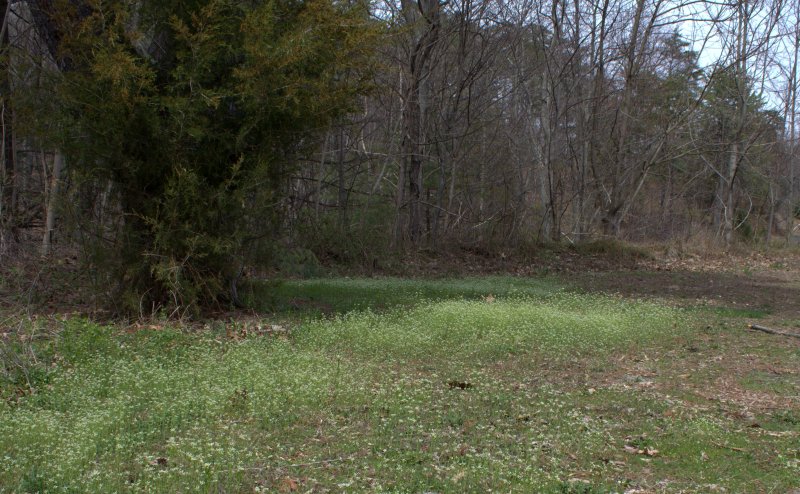
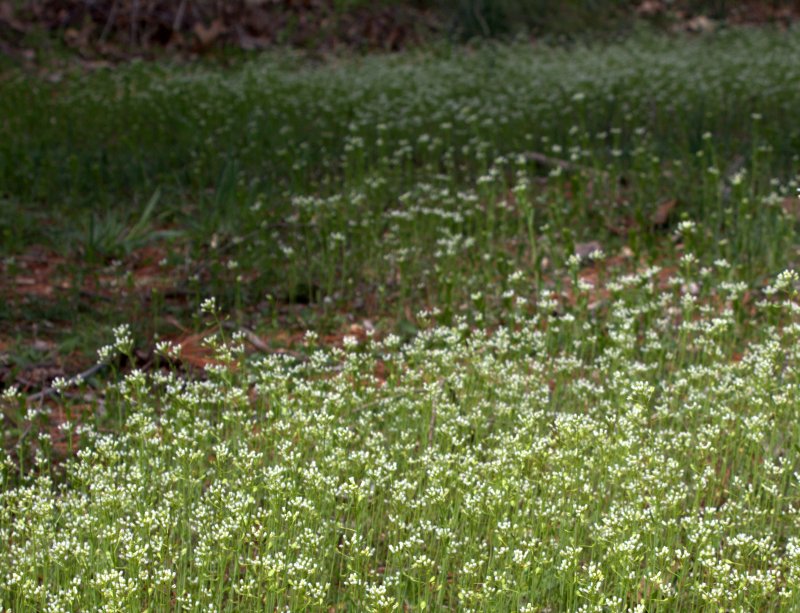
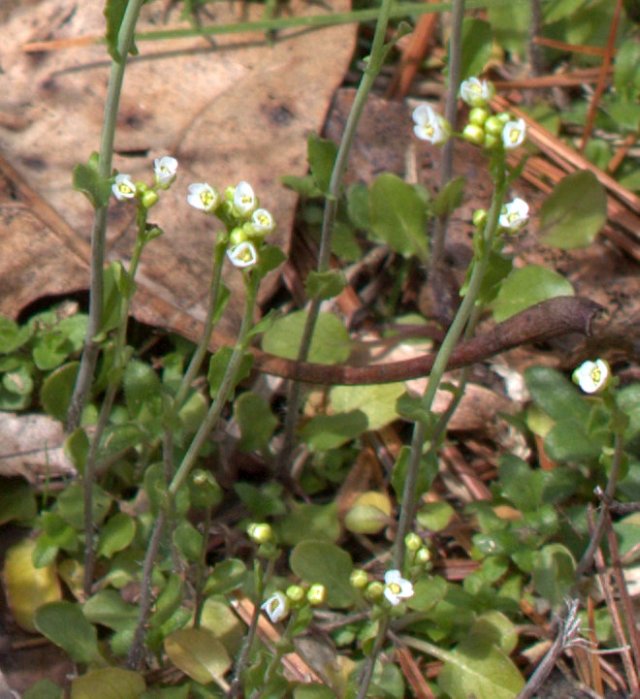
Field peppergrass has leaves at the base of the plant, called basal leaves, that have relatively long stems and an oval shape. Smaller leaves that clasp the stem alternate up the stem up to the terminal flower cluster. As the plant matures small flower clusters will appear in the stem leaf axils.
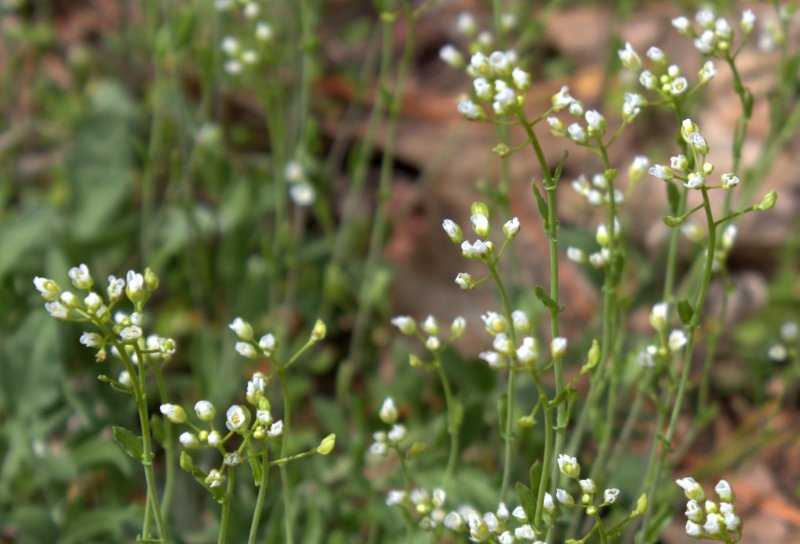
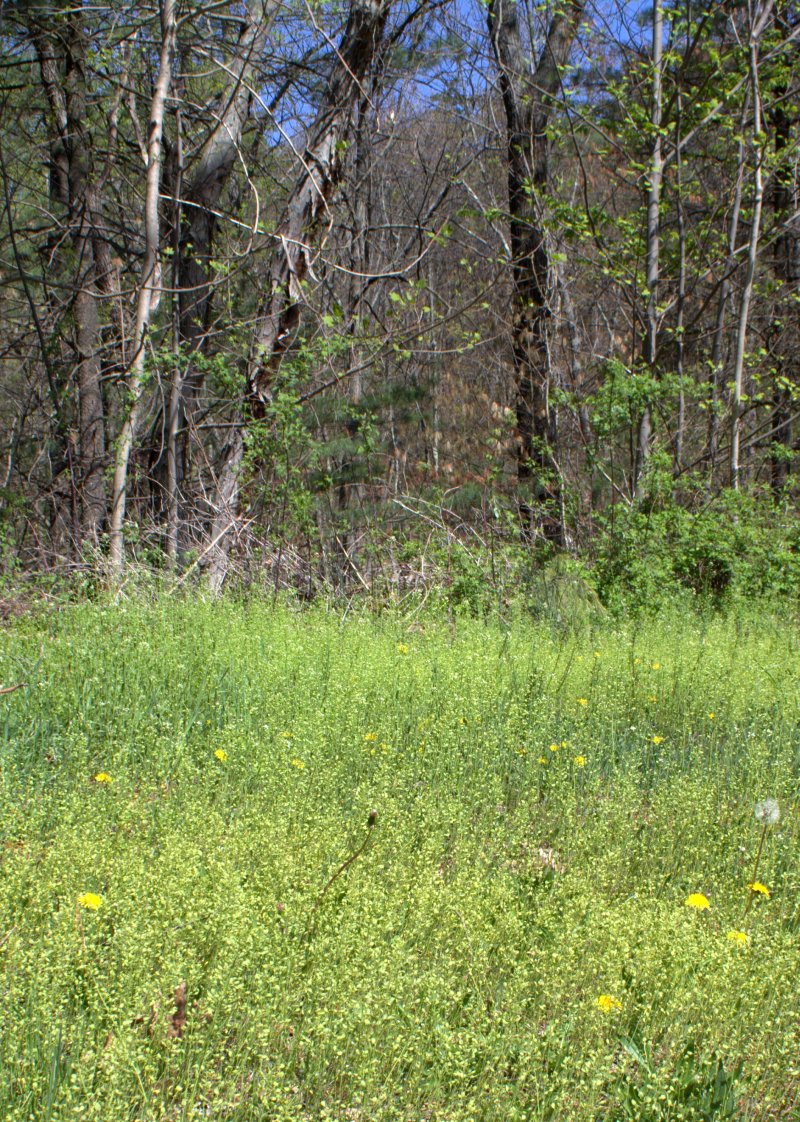
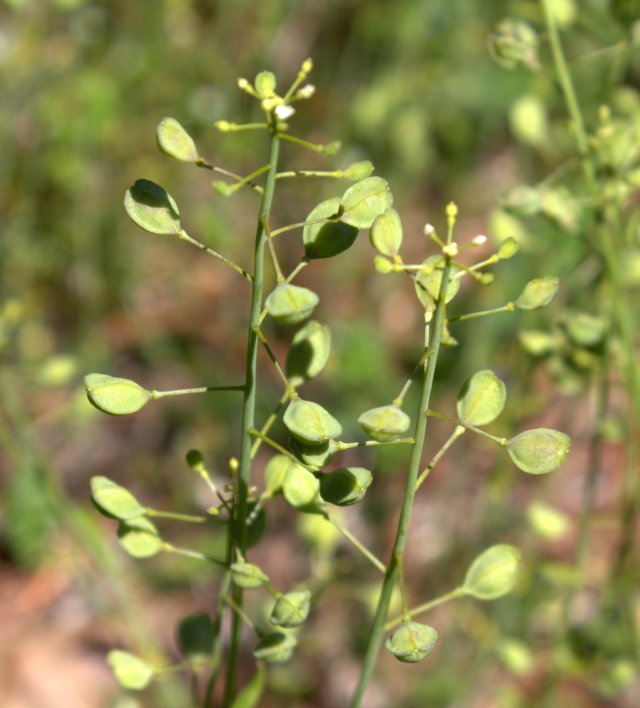
Fertilized flowers lose their petals and swell to develop the seeds which are held in roundish pods. The pods are somewhat flattened from side-to-side and have a central suture line that extends from the tip of the pod to the flower stem.
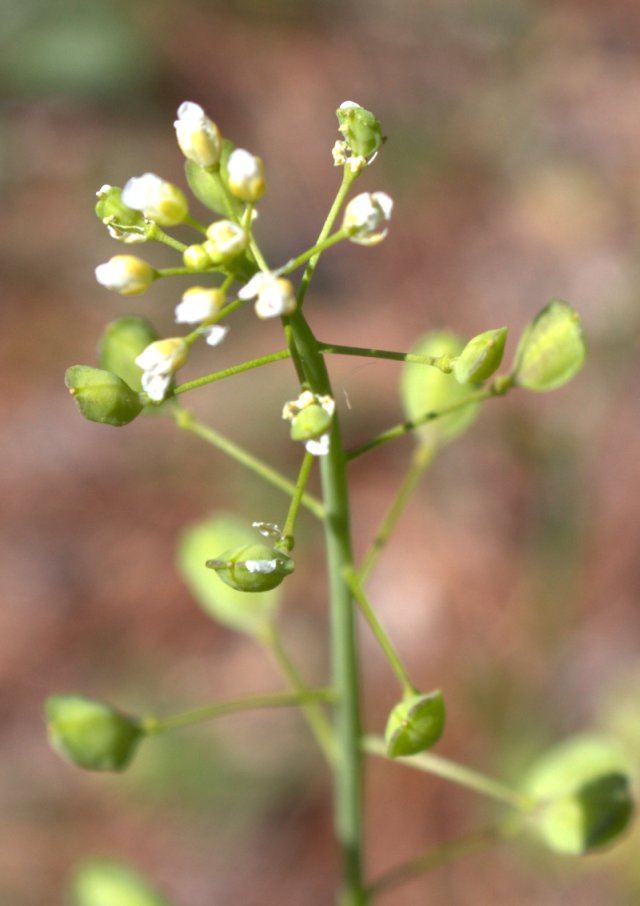
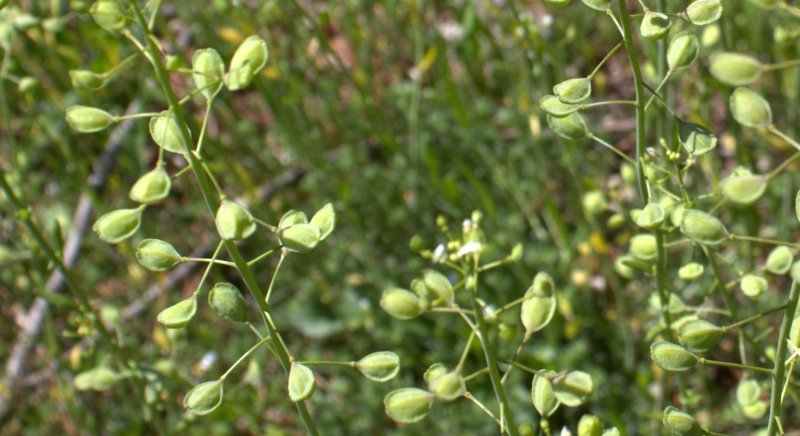
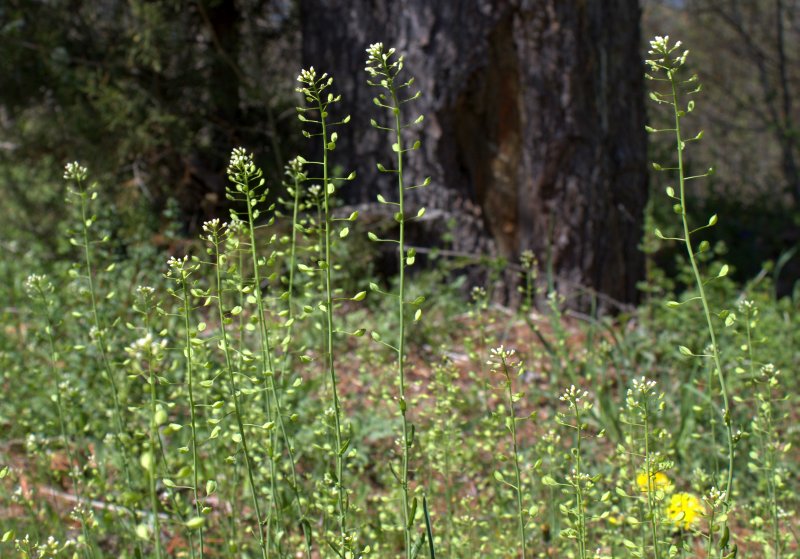
Seed pod photos taken on 6 May 2014.
Early flower photos taken on 18 April 2014.